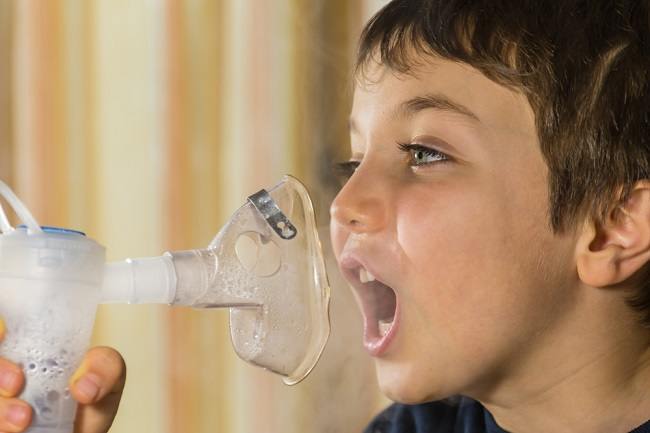Crossed eyes are a condition when position both eyes don't parallel and not point in the same direction. This condition occurs because the muscles of the two eyeballs cannot coordinate to regulate the direction of the eyeballs, so that both eyes see different objects.

Squint eye treatment can be done by various methods, namely by using glasses, eye patches, eye drops, or through eye muscle surgery. Both glasses and eye patches work by "forcing" the crossed eye to work, and cover the normal vision of the eye. In this way, the crossed eye will act as the dominant eye, so that the eye muscles will be trained by themselves and can focus both eyes in the same direction.
Eye drops also play a role in treating crossed eyes on the same principle as glasses and eye patches. The eye drops used contain atropine which works by blurring normal eye vision for several hours. If all these methods do not treat a squint, the patient can undergo eye muscle surgery to treat a squint.
Indications for Squint Eye Treatment
A person will be recommended to undergo squint treatment if they experience symptoms, such as:
- Double vision.
- Eyes that are not focused in the same direction.
- Loss of vision in one eye or not being able to see in detail.
- Eye movements that do not go hand in hand, due to poor eye coordination.
The symptoms of a squint can occur intermittently or continuously. Keep in mind that children who suffer from crossed eyes are often not aware of these symptoms. Crossed eyes in children are generally recognized by adults, especially teachers and parents. Children with double vision often find it difficult to see objects and it can affect their learning process. Sometimes, children don't notice double vision because they develop amblyopia (lazy eye) more quickly than adults.
Squint Eye Treatment Warning
In general, there are no special conditions that prevent patients from undergoing squint surgery at all. However, to avoid complications of squint surgery, patients should inform their doctor about their illness before undergoing surgery. Some conditions that can increase the risk of complications of squint surgery are:
- Elderly.
- Have a history of diseases that can interfere with blood circulation, such as diabetes and hypertension.
- Have a history of previous eye muscle surgery.
Squint eye surgery is done by realigning the eye muscles which causes poor coordination between the two eyes. The number of eye muscles corrected during this operation varies, according to the doctor's diagnosis. However, the more the eye muscles are corrected through squint surgery, the higher the risk of complications, especially anterior segment ischemia of the eye.
Squint Eye Treatment Preparation
Before deciding to recommend a patient to undergo squint surgery, the doctor will ask for information about the type of treatment the patient has had before. If the doctor decides to have surgery, the patient will undergo an eye examination to determine the severity of the squint experienced. The main examination carried out is an examination of eye movements or orthotics. In addition to eye examinations, patients will also undergo a general physical examination to determine their health condition prior to surgery.
If the patient is taking blood-thinning drugs, such as aspirin, warfarin, or heparin, the doctor will ask the patient to stop taking these drugs temporarily. Medications and other supplements that the patient is taking should also be notified to the doctor. Patients will be asked to fast before undergoing surgery to avoid side effects from the anesthetic, such as nausea and vomiting. If the patient is suffering from certain diseases other than a squint, the doctor will postpone the operation until the patient is healthy enough to undergo surgery.
Squint Eye Treatment Procedure
Treatment of squint with surgery in children is done in their unconscious state after being given anesthesia. Children may feel anxiety before surgery due to being separated from their parents. This condition can be overcome by the doctor by giving a sedative to the child. Cross eye surgery in adults can be done consciously or unconsciously. Adults can choose the anesthetic to be used during surgery, whether local or general anesthesia.
After the anesthetic has taken effect, the ophthalmologist will open and secure the patient's eyelids with a speculum. After that, the doctor will make a small incision (incision) in the thin clear membrane that covers the white part of the eye (conjunctiva). Through this small incision, the doctor will correct and realign the eye muscles that cause the patient's eyes to squint. Squint surgery can be performed in one eye or both eyes.
Eye muscle surgery is done by strengthening or weakening the eye muscles to improve the coordination of the movements of the two eyeballs. Strengthening the eyeball muscle is done by cutting (resection) the muscle or tendon of the eyeball. While the weakening of the eye muscles is done by releasing the eye muscles, then putting them back at a point near the back of the eyeball or is called eye muscle recession. This process can be performed on both adults and children.
Cross eye surgery generally lasts for 1-2 hours. Especially in adults, the eye muscles that are adjusted and corrected during surgery can be temporarily attached first. Patients whose eye muscles are temporarily attached may undergo eye movement testing after regaining consciousness after surgery. If it is felt that the coordination of the movements of the two eyeballs is not perfect or is still crossed, the patient will undergo surgery again to rearrange the eye muscles. If the squint is gone and the eye movement coordination is good, the eyeball muscles will be permanently attached.
After Squint Eye Treatment
Cross eye surgery is generally done without hospitalization, which means the patient can go home the same day after the surgery. The patient will experience itching and pain in the eye for several days after the operation. However, avoid scratching your eyes to preserve the results of the surgery and prevent infection. In addition, the patient should keep the operated eye clean and free from dust and other irritating objects or materials. If needed, the doctor can give antibiotics in the form of drops or ointments to prevent eye infections.
The doctor will schedule a follow-up for the patient for a few weeks after the operation. During the control, the doctor will monitor the condition and healing of the eye after surgery. Some people who undergo squint surgery may experience postoperative visual disturbances, especially children. Children with postoperative visual impairment are advised to keep an eye patch on to train their weaker eye after surgery. Therapy with a blindfold not only trains the weak eyeball, but also trains the brain that translates vision from the eye. Adults who have undergone squint surgery and have visual impairments are still advised to wear glasses, until the visual disturbances can be overcome.
Squint Eye Treatment Risks
Every operation has a risk of complications. Cross eye surgery can also cause complications, although it is rare. Some of the risks of complications that can occur as a result of undergoing squint surgery are:
- Infection of the eye.
- Eye bleeding.
- Eyes are red and feel dry.
- Double vision.
- Abrasion or abrasion of the cornea of the eye.
- Retinal detachment.









